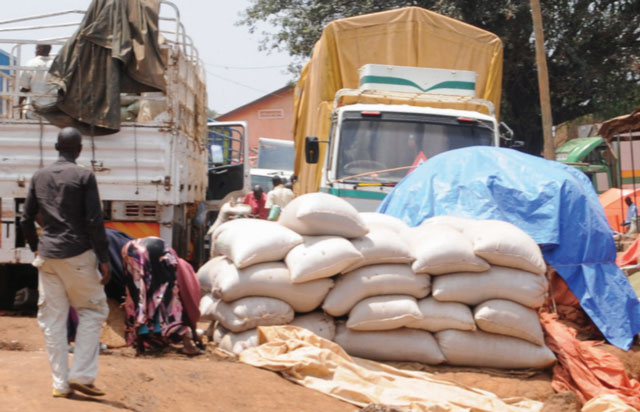
Back then, when Ministry of Agriculture officials showed up at the Uganda Media Centre, it was mainly to brief the country about the worsening food insecurity, with close to 11 million Ugandans staring hunger and possible starvation in the face.
The gloom had started earlier, in 2016, when the September to December rains failed amidst a severe drought. Things got worse when the next crop from the March to May 2017 planting season was ravaged by a never before seen pest in Uganda; the Fall Army Worm.
Caught unprepared and under-resourced, the government response led by Ssempijja was more of lip-service than actual interventions. The government pledged billions of shillings to procure temporary relief food but little was delivered; mainly because President Yoweri Museveni argued against habituating starving Ugandans to government food relief. So the Office of the Prime Minister delivered a few bags of maize flour and beans to the most severely affected populations in Karamoja, Teso, Bukedi and the Cattle Corridor, including the southern district of Isingiro. The Chinese government also donated 119,660 bags which were distributed across the country.
Fortunately as the year progressed, the weather improved in the second planting season in September to December and farmers worked their gardens with determination. The results are being enjoyed today.
Grain storage facilities
But the bumper maize harvest has exposed what could be the weakest point in ensuring food security in Uganda; the lack of proper post-harvest storage facilities. Ogang told The Independent that the maize crop is not the only one that did well. He said Uganda also now has a good amount of beans. But he said smallholder farmers are now grappling with poor storage facilities.
“This is the reason why most Ugandan farmers cannot manage to store their produce for more than 100 days,” he added, “ because they have poor storage, they sell it at giveaway prices.”
Emmanuel Kabaale, the team leader at Ten Mangoes Agribusiness Initiative in Kamuli District told The Independent on Feb.02 that the favoured storage facility; the hermetic kits that are promoted as the most effective are, at Shs450,000, currently too costly for most smallholder farmers. He advised farmers to form cooperatives to jointly access credit from the government to buy them.
Post-harvest losses are a major constraint to development of the grain sector, not only in Uganda, but in the East African region and it continues to worsen food security concerns. It is partly why agricultural experts are recommending post-harvest technologies like hermetic kits.
These are insulated airtight storage kits (bags and bins) that cut off oxygen from any pests in the harvested crop. They eliminate insect infestation without use of pesticides making it safer, environmentally friendly, and cost effective in reducing post-harvest losses.
Ogang also told The Independent that his farmers’ federation encourages its members to get into groups, build modern storage facilities to ensure they keep their produce longer for better prices.
Marketing tips
On the marketing front, the Ministry of Agriculture appears caught with a double message; one capturing what is desirable and the other addressing the reality.
On one hand, the Ministry is advising smallholder farmers not to sell all the maize and beans they harvest, and instead preserve some for their own consumption.
 The Independent Uganda: You get the Truth we Pay the Price
The Independent Uganda: You get the Truth we Pay the Price


